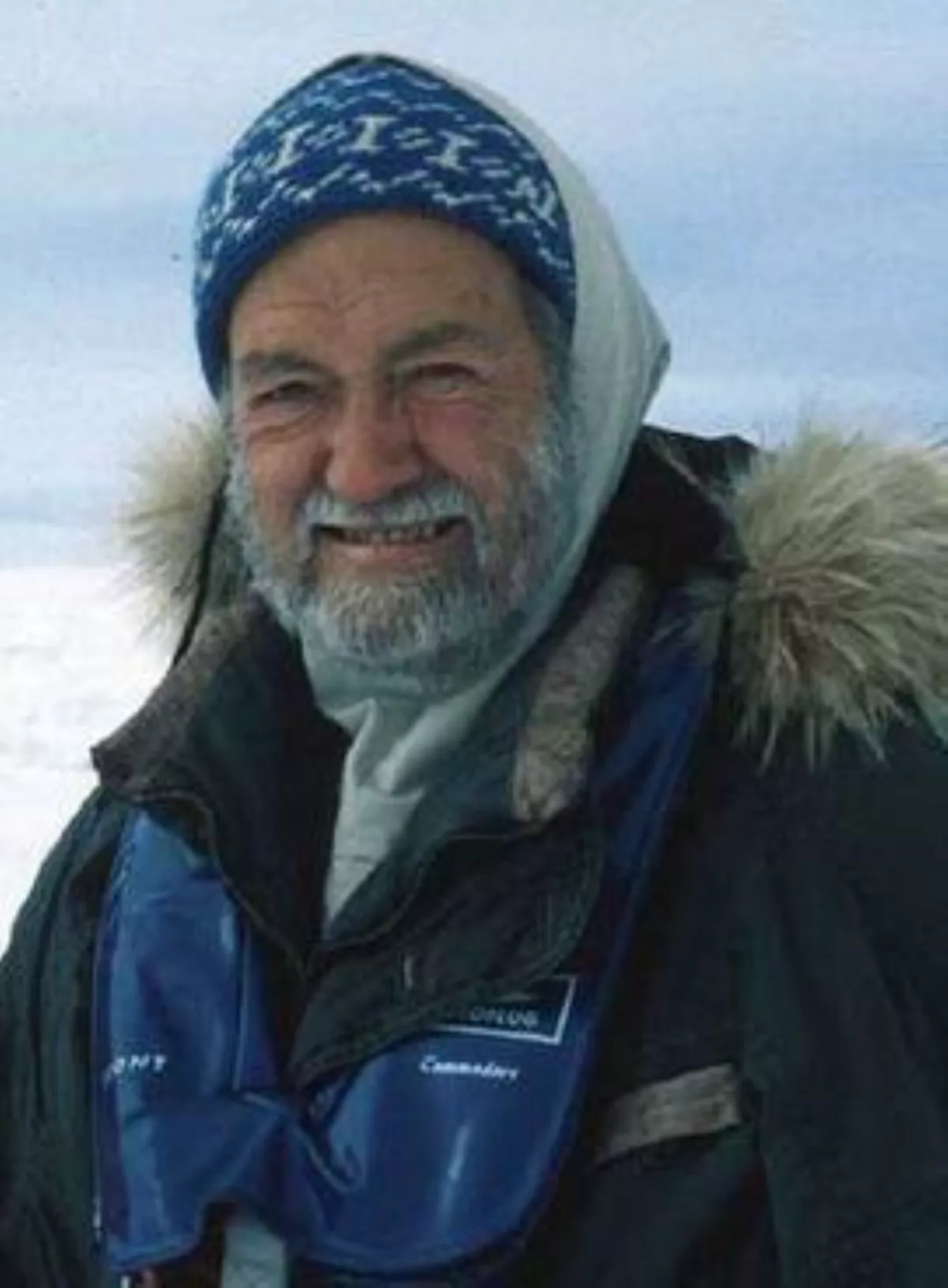 1.
1. Sir Walter William Herbert was a British polar explorer, writer and artist.

 1.
1. Sir Walter William Herbert was a British polar explorer, writer and artist.
Wally Herbert was described by Sir Ranulph Fiennes as "the greatest polar explorer of our time".
Wally Herbert travelled with dog teams and open boats well over 23,000 miles; more than half of that distance through unexplored areas.
Wally Herbert had solo exhibitions of his drawings and paintings.
Walter Wally Herbert was born into an army family in England who emigrated to Egypt on assignment when he was three.
Wally Herbert studied at the Royal School of Military Survey, then spent 18 months surveying in Egypt and Cyprus.
Wally Herbert travelled back to England through Turkey and Greece, drawing portraits for his board and lodging.
In 1955, when Wally Herbert was 21, he carried out surveying in the Antarctic with the Falkland Islands Dependencies Survey, during which he became an expert in dog sleighing.
In recognition of his polar achievements, Wally Herbert received several honours and awards: among them the Polar Medal and bar; the Founders' Medal of the Royal Geographical Society, the gold medals of several Geographical Societies, and the Explorers Medal of the Explorers Club.
Wally Herbert has a mountain range and a plateau named after him in the Antarctic; the most northerly mountain in Svalbard named after him in the Arctic.
Wally Herbert was a prize-winning author and an artist and had one-man shows in London, New York and Sydney.
Wally Herbert wrote a number of books and drew some of the first landscapes of the North Pole, in his early exploration days.
Wally Herbert illustrated all of his books, and his paintings and drawings received critical acclaim.
Wally Herbert's research challenged Robert Peary's claim to have reached the North Pole in 1909.
The National Geographic Society, which had supported Peary's original expedition, hired Wally Herbert to assess a 1909 diary and astronomical observations, which had not been accessible to researchers for decades.
Wally Herbert concluded that the explorer had not reached the Pole and must have falsified the records.